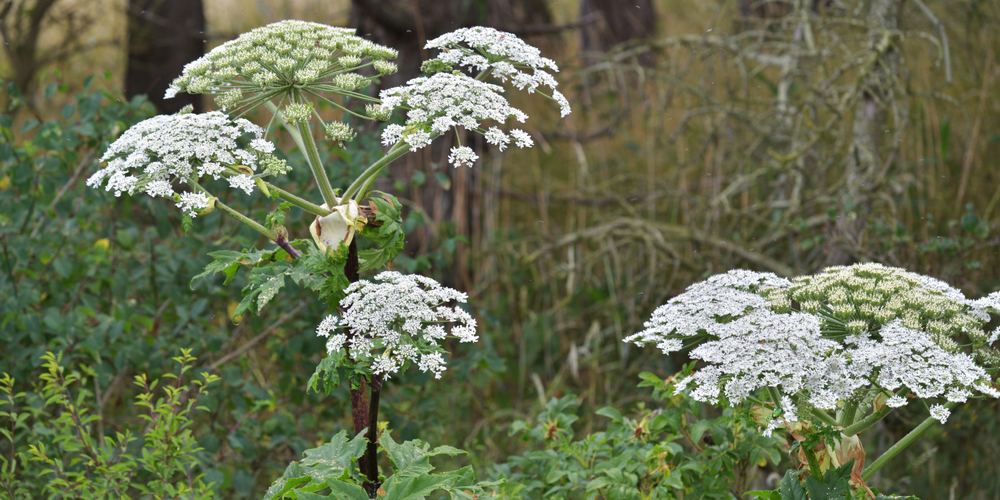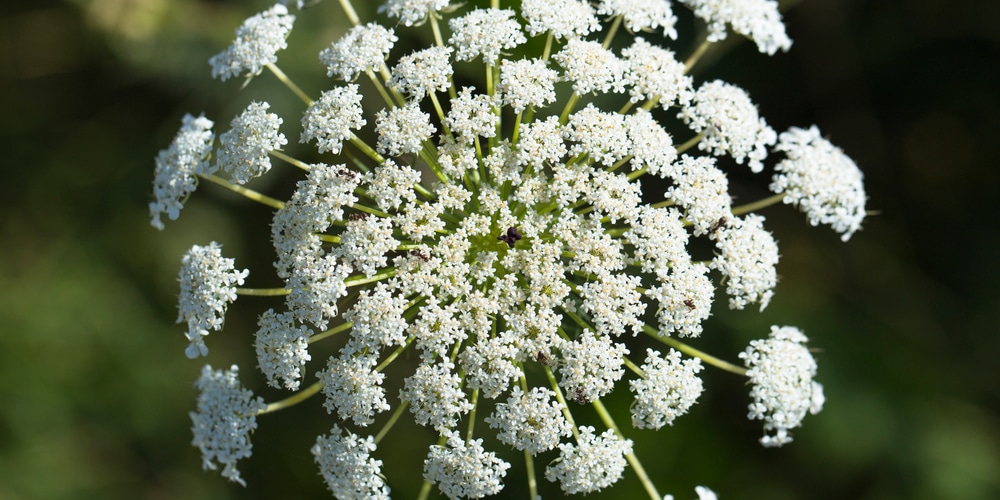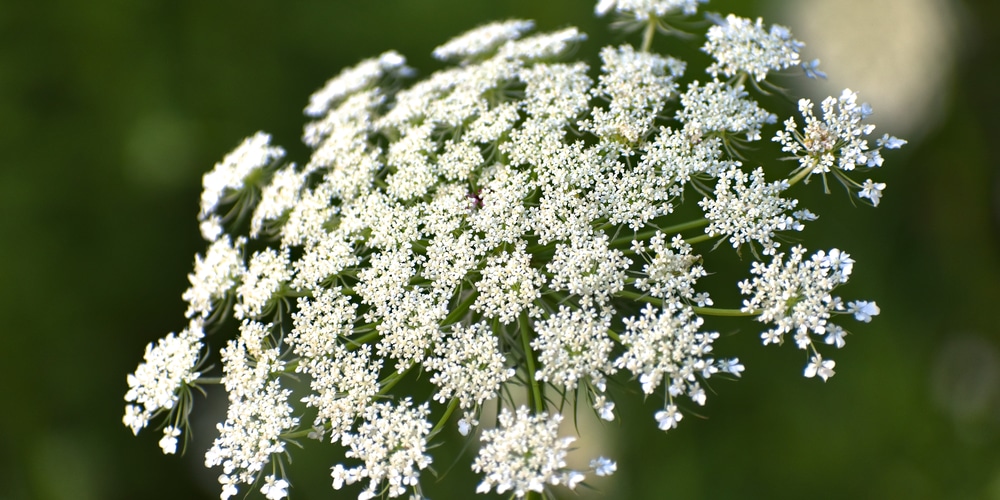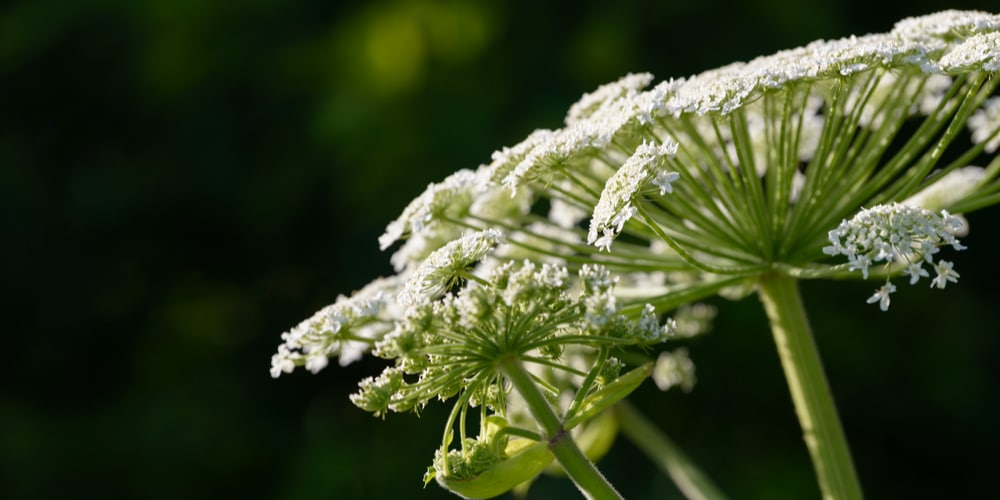Have you ever seen Queen Anne’s Lace in the wild? It’s a beautiful, delicate flower that grows near streams and ponds, with white petals and a lacy flower cap. Its flowers are small and clustered together, and they have a sweet, floral scent. You may be wondering what the difference is between queen Anne’s lace vs hogweed.
But beware – Queen Anne’s Lace can be easily confused with the much more dangerous hogweed.
Both plants are members of the carrot family and share a similar appearance. However, hogweed is much more than just a pretty face; it’s a highly invasive species that can cause severe burns and blindness. So, how can you tell these two plants apart? Let’s compare Queen Anne’s Lace vs Hogweed.
Queen Anne’s Lace vs Hogweed: Main Differences

Though they may look similar at first glance, Queen Anne’s lace and hogweed are actually two very different plants. While one is a delicate and beautiful flower, the other is a dangerous and invasive weed. So, what’s the difference?
Here are a few key characteristics to look for:
Flowers
Queen Anne’s lace typically has small, insignificant flowers in the center of its umbrella-shaped cluster. You’ll notice that it usually has a small and dark knot in the center of each flower.
Hogweed, on the other hand, has large, showy flowers that are arranged in an umbrella-shaped cluster. The center of each hogweed flower is usually light-colored or white.
Additionally, Queen Anne’s lace’s umbels are slightly flat compared to hogweed’s. You’ll also notice that a hogweed’s flowers are much larger than a Queen Anne’s lace, up to three times the size!

Leaves
If you look closely, Queen Anne’s lace has finely divided leaves that look like they’ve been cut with a pinking shear. In addition, its leaves are deeply lobed, while hogweed’s leaves are more coarsely textured.
Queen Anne’s lace has thin, delicate stems that are usually green or reddish in color. Hogweed stems, on the other hand, are thick and sturdy.
Stems
This is probably the most obvious way to tell these two plants apart. Queen Anne’s lace has a thin, delicate stem that is typically green in color. It has thin, fine hairs that go all through the stem. Its stem does not have spots, unlike hogweed with purple blotches along its smooth stem.
Scent
While we don’t usually recommend getting too close to wild plants, Queen Anne’s lace has a sweet, floral scent. Hogweed, on the other hand, is odorless.
Plant Characteristics
Queen Anne’s lace is an annual plant that grows up to 2 feet tall. It is not poisonous, and it is often used in bouquets and floral arrangements.
Hogweed is an invasive and highly toxic plant. It can cause serious burns if you come into contact with it. It is a biennial plant that can grow up to 14 feet tall.
Queen Anne’s Lace vs Hogweed: Similarities
At first glance, the similarities may seem to outweigh the differences. After all, both Queen Anne’s lace and hogweed are white flowers with umbrella-shaped clusters. However, there are actually quite a few key differences between these two plants.
Here are a few of the most notable similarities:
- Both plants have white flowers shaped in umbrella-like clusters
- Both plants are members of the carrot family
- Queen Anne’s lace and hogweed have umbrella-shaped flower clusters
- Both plants are members of the carrot family
The Common Dangers Associated with Hogweed
Found in different parts of the world, hogweed is an invasive plant that can grow up to 14 feet tall. Despite its pretty characteristics, this plant can cause serious harm to humans.
It’s Highly Toxic
All parts of hogweed are highly toxic if ingested. Even coming into contact with this plant can cause severe burns and blisters. This is partly due to the fact that hogweed contains furocoumarins, which are chemicals that make the plant’s sap much more sensitive to light.
When this sap comes into contact with human skin, it can cause severe burns, blisters and may cause blindness when it comes into contact with the eyes.
Hogweed is an Invasive Plant
Hogweed is considered to be an invasive plant in many parts of the world, including the United States. This plant crowds out native plants, which can disrupt local ecosystems. In addition, hogweed’s toxins can kill other plants and animals that come into contact with it.
What to Do When You Come Into Contact with Hogweed
If you come into contact with hogweed, it’s important to take action immediately. The first thing you should do is wash the affected area with soap and water. If you have any open cuts or wounds, be sure to keep them covered. An antiseptic soap may also be useful.
You should also seek medical attention as soon as possible. Hogweed sap can cause severe burns and blisters, so it’s important to get any affected areas treated right away.
Queen Anne’s lace vs hogweed: Final Thoughts
While Queen Anne’s lace and hogweed may look similar, there are actually quite a few key differences between these two plants.
Hogweed is an invasive and highly toxic plant that can cause serious harm to humans. Queen Anne’s lace, on the other hand, is not poisonous and is prized for its pretty white flowers.
If you come across a plant that you think may be hogweed, it’s essential to exercise caution. Carefully observe the plant and look for key characteristics, such as purple blotches on the stem.
If you’re still not sure, err on the side of caution and avoid coming into contact with the plant. If you do come into contact with hogweed, be sure to wash the affected area immediately and seek medical attention.
You may also like: Marble Queen Pothos

